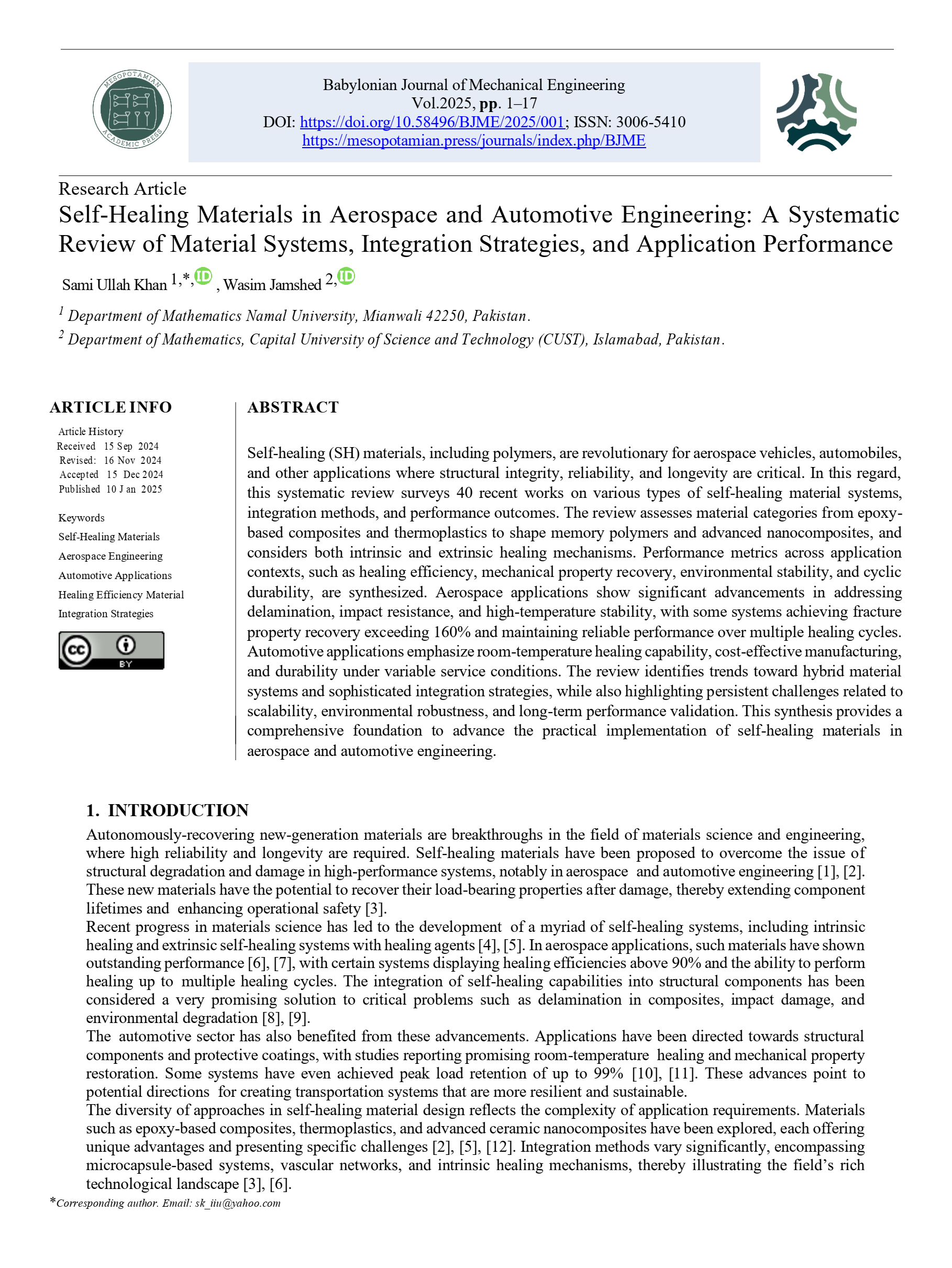Self-Healing Materials in Aerospace and Automotive Engineering: A Systematic Review of Material Systems, Integration Strategies, and Application Performance
Main Article Content
Abstract
Self-healing (SH) materials, including polymers, are revolutionary for aerospace vehicles, automobiles, and other applications where structural integrity, reliability, and longevity are critical. In this regard, this systematic review surveys 40 recent works on various types of self-healing material systems, integration methods, and performance outcomes. The review assesses material categories from epoxy-based composites and thermoplastics to shape memory polymers and advanced nanocomposites, and considers both intrinsic and extrinsic healing mechanisms. Performance metrics across application contexts, such as healing efficiency, mechanical property recovery, environmental stability, and cyclic durability, are synthesized. Aerospace applications show significant advancements in addressing delamination, impact resistance, and high-temperature stability, with some systems achieving fracture property recovery exceeding 160% and maintaining reliable performance over multiple healing cycles. Automotive applications emphasize room-temperature healing capability, cost-effective manufacturing, and durability under variable service conditions. The review identifies trends toward hybrid material systems and sophisticated integration strategies, while also highlighting persistent challenges related to scalability, environmental robustness, and long-term performance validation. This synthesis provides a comprehensive foundation to advance the practical implementation of self-healing materials in aerospace and automotive engineering.
Article Details
Issue
Section

This work is licensed under a Creative Commons Attribution 4.0 International License.
